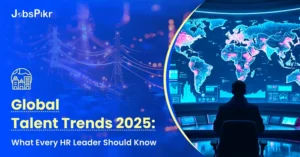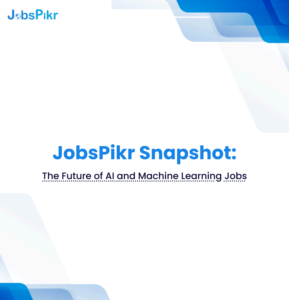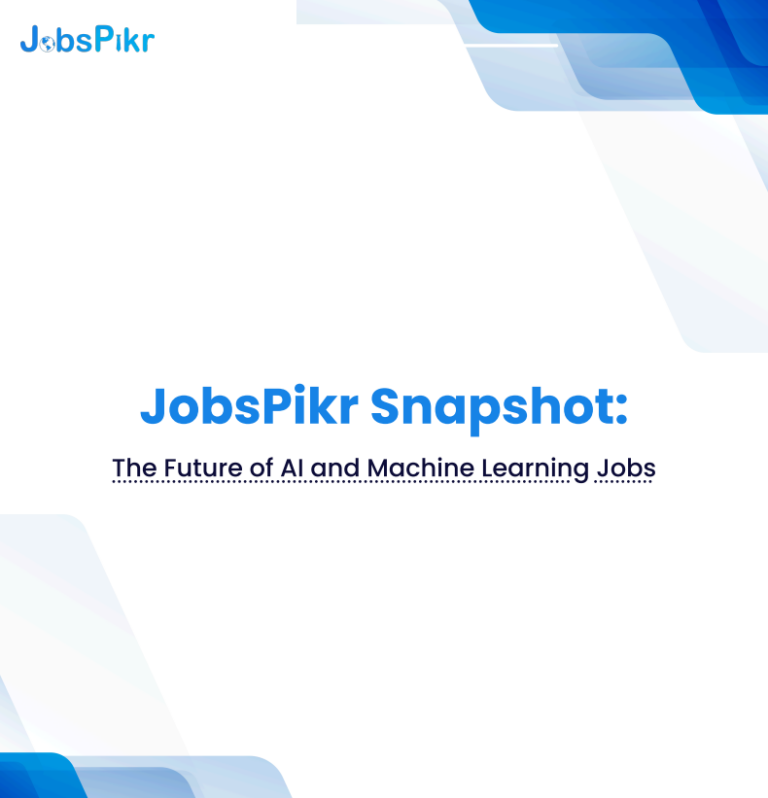Healthcare organizations today face a significant challenge: a growing workforce gap. This gap represents the disparity between the increasing demand for healthcare professionals and the actual availability of qualified talent. Factors such as an aging population, the rise in chronic health conditions, and rapid technological advancements have intensified this issue.
The World Health Organization (WHO) projects a global shortfall of 18 million health workers by 2030, predominantly in low- and lower-middle-income countries World Health Organization (WHO). This shortage is not just a looming crisis; it’s already impacting patient care, operational efficiency, and the overall quality of healthcare delivery worldwide.
However, there’s a silver lining. By leveraging workforce analysis tools, healthcare enterprises can predict shortages and strategically plan to mitigate their impact. This report delves into healthcare workforce analytics, identifies regional and specialty-based gaps, and explores data-driven strategies to bridge these gaps effectively.
Current Trends Shaping the Healthcare Workforce Gap in 2025
Several key trends are shaping the current healthcare workforce landscape, contributing significantly to the widening gap:
Increased Demand for Healthcare Services
An aging global population has led to a surge in demand for healthcare services. In the United States, employment in healthcare occupations is projected to grow 13% from 2021 to 2031, adding about 2 million new jobs Bureau of Labor Statistics. This growth rate is significantly faster than the average for all occupations, underscoring the escalating demand for healthcare professionals.
High Retirement Rates
The healthcare workforce is aging, with a significant portion nearing retirement. In 2020, the median age of registered nurses (RNs) in the U.S. was 52 years, with more than one-fifth indicating an intent to retire within five years ANA. This impending wave of retirements exacerbates the existing workforce gap, particularly in nursing.
Technological Advancements and Digitalization
The rapid advancement in healthcare technology has increased the demand for skilled healthcare IT professionals. Hospitals and healthcare providers now heavily rely on electronic health records (EHRs), telemedicine, and data-driven decision-making systems. However, there’s a shortage of skilled talent equipped to manage and implement these complex technologies.
Regional Breakdown: Where is the Workforce Gap Most Critical?

The healthcare workforce gap varies significantly by region and specialty. Here’s a closer look at some critical regions:
North America
In North America, particularly the United States and Canada, nursing shortages are pronounced. The American Nurses Association predicts a shortage of over 500,000 nurses by 2026, particularly impacting rural communities (ANA, 2023). Rural hospitals face additional challenges in recruiting and retaining talent due to geographic isolation, limited local amenities, and often insufficient funding to offer competitive salaries and benefits. Additionally, mental health professionals are also critically scarce, with nearly 60% of counties lacking a psychiatrist.
Europe
Europe’s healthcare sector faces substantial shortages, especially in frontline care and health IT roles. The European Commission estimates a deficit of approximately 4.1 million healthcare workers by 2030 (European Commission, 2023). The Brexit transition has further intensified talent shortages in the UK healthcare sector, affecting staffing levels significantly. Countries such as Germany, France, and Italy are struggling to maintain adequate numbers of nurses and care workers due to demographic changes, including aging populations and fewer new entrants into the healthcare workforce.
Asia-Pacific
Rapidly aging populations in Japan, South Korea, and China are intensifying healthcare demands, especially for elder care. Japan alone faces a shortfall of approximately 380,000 healthcare workers by 2025 (Ministry of Health, Labour, and Welfare, Japan, 2023). In China, rural areas are particularly affected, facing shortages in doctors, nurses, and healthcare technicians, due to urban migration trends and insufficient medical training facilities. Australia and New Zealand also report significant shortages in mental health professionals, caregivers, and specialists in aged care, intensifying their reliance on international recruitment efforts.
Africa
In Africa, the healthcare workforce gap is critical, with an estimated shortage of over 6 million healthcare professionals by 2030 (WHO Africa Region, 2023). Countries like Nigeria, Kenya, and South Africa struggle with severe shortages due to inadequate training infrastructure, migration of trained healthcare workers to higher-income countries, and insufficient government funding for health sector development.
Latin America
Latin America faces significant healthcare workforce challenges, with shortages driven by limited healthcare infrastructure, economic constraints, and migration. Countries like Brazil, Mexico, and Argentina experience substantial deficits in nurses and specialists, particularly in rural and underserved regions. Economic instability further exacerbates the issue, prompting healthcare professionals to seek opportunities abroad.
Workforce Analysis: Using Data to Identify and Predict Shortages
Workforce analysis is a critical process healthcare organizations use to identify, predict, and mitigate talent shortages systematically. This process involves the comprehensive evaluation of job market data, internal staffing trends, retirement rates, and hiring patterns. By leveraging advanced analytics and data modeling techniques, healthcare providers can proactively address looming workforce shortages.
Advanced workforce analysis platforms like JobsPikr collect and analyze real-time data from millions of global job postings, providing invaluable insights into emerging workforce trends. For instance, identifying spikes in job postings for specific roles or regions allows healthcare organizations to detect emerging skill shortages before they become acute.
Internal staffing trends and employee attrition data also provide critical insights. Monitoring patterns such as rising turnover rates among nurses or sudden increases in retirement notices among senior physicians enables timely action to fill or mitigate potential gaps. Predictive analytics further enhance this capability by forecasting future shortages based on current and historical trends, allowing healthcare providers to strategize long-term hiring and training initiatives.
Moreover, detailed workforce analysis helps in pinpointing specific skills that are increasingly in demand but currently underserved, such as digital health competencies or specialized clinical skills. Healthcare organizations can then focus their recruitment and training programs accordingly, ensuring that staff capabilities align with evolving care delivery models and technological advancements.
Ultimately, workforce analysis offers healthcare leaders a robust, data-driven foundation for making strategic decisions. It transforms reactive approaches into proactive strategies, significantly reducing the risks associated with talent shortages and ensuring sustained operational efficiency and patient care excellence.
Strategic Workforce Planning: Bridging the Gap with Data-Driven Approaches

Addressing the healthcare workforce gap requires more than traditional recruitment. Organizations must adopt strategic workforce planning, leveraging workforce analytics to drive decision-making. Here are essential strategies healthcare organizations can use:
Reskilling and Upskilling Programs
One effective approach is reskilling existing staff to address evolving needs. For instance, healthcare providers can retrain nurses or administrative staff in digital health technologies, EHR management, or telemedicine. According to Deloitte, 74% of healthcare executives believe that continuous learning and reskilling are crucial in managing talent shortages.
Location-Based Hiring
Location-based hiring involves targeting recruitment efforts in regions where talent availability exceeds local demand. Workforce analysis tools, such as JobsPikr, provide insights into these labor market dynamics, allowing healthcare enterprises to optimize their hiring strategies effectively.
Smarter Headcount Planning
Using predictive analytics to forecast staffing needs helps organizations align headcount with patient care demands accurately. Workforce intelligence tools enable healthcare providers to adjust their staffing levels dynamically, ensuring optimal coverage and minimizing the workforce gap.
Leveraging JobsPikr for Healthcare Workforce Intelligence
JobsPikr’s workforce intelligence platform provides healthcare enterprises with advanced analytics and actionable insights. By integrating real-time labor market data, predictive analytics, and comprehensive workforce planning tools, JobsPikr empowers healthcare organizations to:
- Proactively identify regional and specialty-specific workforce gaps.
- Execute targeted recruitment campaigns to fill critical vacancies.
- Accurately forecast future talent shortages using predictive modeling.
- Optimize headcount planning and resource allocation.
JobsPikr allows healthcare enterprises to anticipate and navigate workforce challenges, ensuring sustained operational efficiency and patient care quality, even amid talent shortages.
Navigating the Healthcare Workforce Gap Successfully
The healthcare workforce gap poses considerable challenges, yet these can be effectively managed through strategic workforce planning and advanced analytics. Leveraging platforms like JobsPikr enables healthcare organizations to proactively anticipate shortages, plan strategically, and maintain a robust talent pipeline to meet future healthcare demands.
With the right tools and insights, healthcare leaders, CHROs, and strategic planners can successfully bridge the workforce gap, ensuring sustainable healthcare delivery and operational excellence.Ready to take proactive steps in your healthcare workforce planning? Sign-up on JobsPikr today and empower your organization with the data-driven insights needed to navigate talent shortages effectively.






